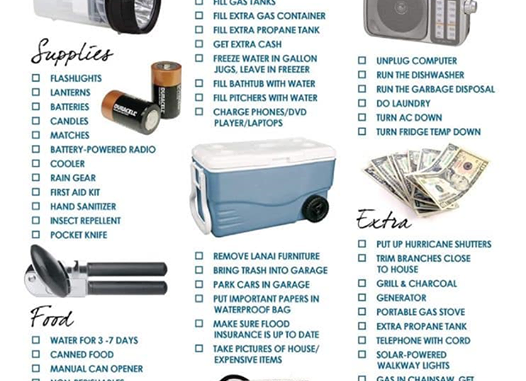
Note–this is the second in a series of preparing your family for emergencies. To review last week’s installment
Week two
This week’s installment has three sections — one, evaluating how your plan worked during Hurricane Isaias; safe drinking water; and three, some valuable tools.
As you’re cleaning up today from yesterday’s storm, take a moment and think about what worked. Did your power go out, and you have to use a generator? If you don’t have generator, did you have sufficient fresh batteries? Candles are never recommended for primary lighting. Could you have gotten out of your driveway if a tree fell across it? What was your plan if a tree or wind damaged your roof? Did you have raingear for your entire family — and could you find it in the dark? The time to think about things like this is now, when the sun is shining.
For supplies, let’s take a look at water. While municipal water systems are designed to work during power outages, they still sometimes fail, and if you’re on a well and pump, you’re reliant on electricity.
The recommended water ration is one gallon per day per person for hygiene, drinking and cooking, but we all use much more than that, even when you can’t shower during a storm. Two to three gallons per day is better, if you have the storage room. You can always stockpile drinking water in bottles, then freeze other containers with tap water in your deep freeze air even the freezer over your refrigerator. If the freezer stays shut, a single gallon will stay solid for three days. While a minimum of three days is considered sufficient, consider keeping as much as seven days of water frozen or packed for emergencies.
And don’t forget your pets and livestock — they require clean water, too. Runoff can contain agricultural chemicals, sewage and other contaminants. Don’t plan on being able to use natural water sources for your animals. Obtain a plastic 55 gallon barrel with a lid, and mount the barrel on a porch or the back of a pickup, out of direct sunlight. Fill it within a few inches of the top, then add one cup of chlorine bleach. and use a piece of garden house to siphon water as needed for your animals.
You can also place five-gallon buckets around the eaves of your home to capture rainwater, which can be boiled for consumption, given to your animals or used for hygiene.
When it comes to tools, two of the most valuable things you can have are among those we take the most for granted — a manual can opener and pliers, either locking, slip-joint or angled. The canopener’s task is obvious; while you can open a can of food with a pocketknife, it is a good way to get injured.
Pliers can be used to shut down water or gas and utility valves, tighten battery or generator connections or even open a stubborn bottle. An adjustable wrench is also handy for more exact jobs.
You’ll also want a pair of scissors (for cutting plastic sheeting), flat and Phillips screwdrivers, a boxcutter or pocketknife, and a claw hammer. A large coffee can can be used to hold packages of screws and nails for making emergency repairs.
While you may have all these items in a home tool kit, it’s better to have separate tools dedicated just to your emergency bin. That way everything is in one place.
Next time, we’ll focus on food.























